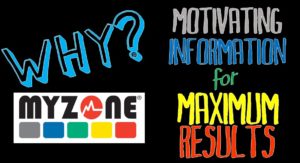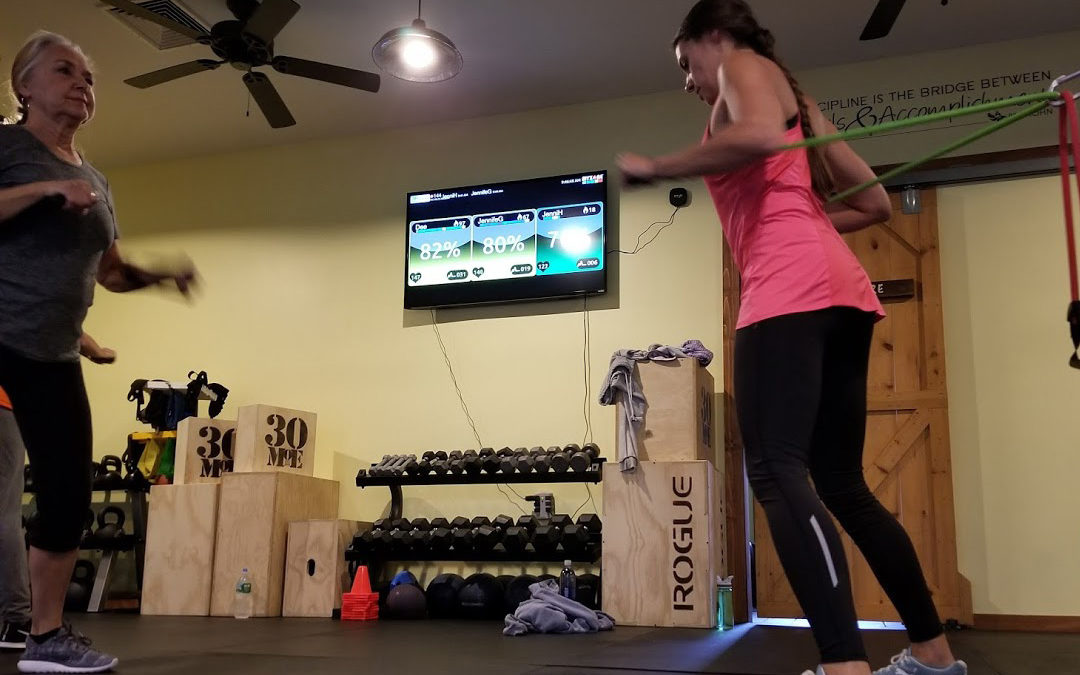Some of you may ask WHY is heart rate training important? Who cares? What does it all mean? What percentage am I aiming for? What affects my heart rate? Let me tell you . . .
Heart rate training guides your training intensity. How hard you are working (intensity) affects your performance and your goals. Knowing your heart rate while training gives you immediate feedback on how hard you are working. This will allow you to adjust your intensity “on the spot”. Class is 30 minutes and you want to make the most of your time in here. Because this is an interval training program, you will aim for 80-90% of your max (yellow & red) with some 70% (green) mixed in there.
Several things can affect your heart rate on a day to day basis. For instance, sleep, stress, nutrition, hydration, body weight, fitness level, heavy training, fatigue, adrenaline, competition, and mental focus – just to name a few. So, if you come into the studio and you’ve had a really stressful day, your heart rate will be higher. Coming into the studio anxious and nervous can increase your heart rate the same as moderate-intensity exercise! People with more body weight will have higher heart rates compared to those with less body weight. Someone who is more trained than another will have a lower resting heart rate and will require greater effort to get into their training zone. This is because their heart is more efficient at pumping blood throughout the body, thus it needs more stimulus to challenge it. Obviously the best scenario is to be hydrated, have slept 7-8 hrs, nutritionally fueled, and not so stressed. This will give you the most accurate results possible.
The average calorie burn during a 30-minute circuit training class is 250 calories. However, this is influenced by gender, intensity, body weight, and age. You can burn more or less calories depending on how hard you train. The great thing about our interval training program is that the intensity is higher than the average 30-minute class. This means that you continue to burn calories AFTER your workout. The number of calories burned during a workout is just one glimpse of your calories. However, if you’re a numbers person, let’s compare the in-class calorie burn to other workouts. Below is an example of how many calories are burned by an average 155-lb person during 30 minutes of exercise from Harvard Health Publications.
- General weight lifting: 112 calories
- Tai Chi: 149 calories
- Horseback riding: 149 calories
- Walking 3.5 mph: 149 calories
- General stair step machine: 223 calories
- Walk/jog <10 min/mile: 223 calories
- Vigorous stationary rowing: 260 calories
- Circuit training: 298 calories
- General elliptical: 335 calories
- Step aerobics: 372 calories
- Jogging about 10 min/mile pace: 372 calories
- Running 9 min/mile pace: 409 calories
Typically, larger muscle groups with greater loads (sandbag, kettlebell, etc) will increase your heart rate to a higher intensity compared to smaller muscle groups, i.e. squats vs. bicep curls. However, we saw some serious heart rates in the forward shoulder raise, bird dog bag drag, plank hold/reach, and TRX ward. These are whole body movements even though they seem “easy” compared to a sandbag clean. This is why we harp on your big toe, butt, and bracing your core! You engage your whole body! Heart rates during the bird dog bag drag ranged from 72% – 94% of heart rate max! This proves that you are doing more work than you think even though it seems “easy”. Engaging your whole body will bump your intensity!
I chuckle to think that I wrote last week that I’m not a competitive person. HaHa!! Well, because I am connected with the people who bought the MyZone belts, I can see their workouts and they can see mine. That makes all of us more accountable to our workouts, effort, and goals. Myself included! I rode my bike THREE times this past week because I needed to burn more calories and get more points. I now realize that I’ve not been working hard enough and the MyZone belt has forced me to bump up my intensity! I needed a kick in the butt!!
While everyone will benefit from heart rate training, it’s not for everyone. People who are on heart rate controlled medications can not use heart rate as a gauge for their intensity. They will rely on perceived exertion (how hard you feel the exercise is). People who do not want to know their intensity will not be motivated by heart rate training. Not everyone wants to go hard. That is totally ok! Without the heart rate monitor, everyone can aim for an effort level of 8-9 out of 10 on certain exercises. YOUR 8-9 effort. We’re in this together to get the most out of our workouts!
*Read more about “after calorie burn” HERE.


